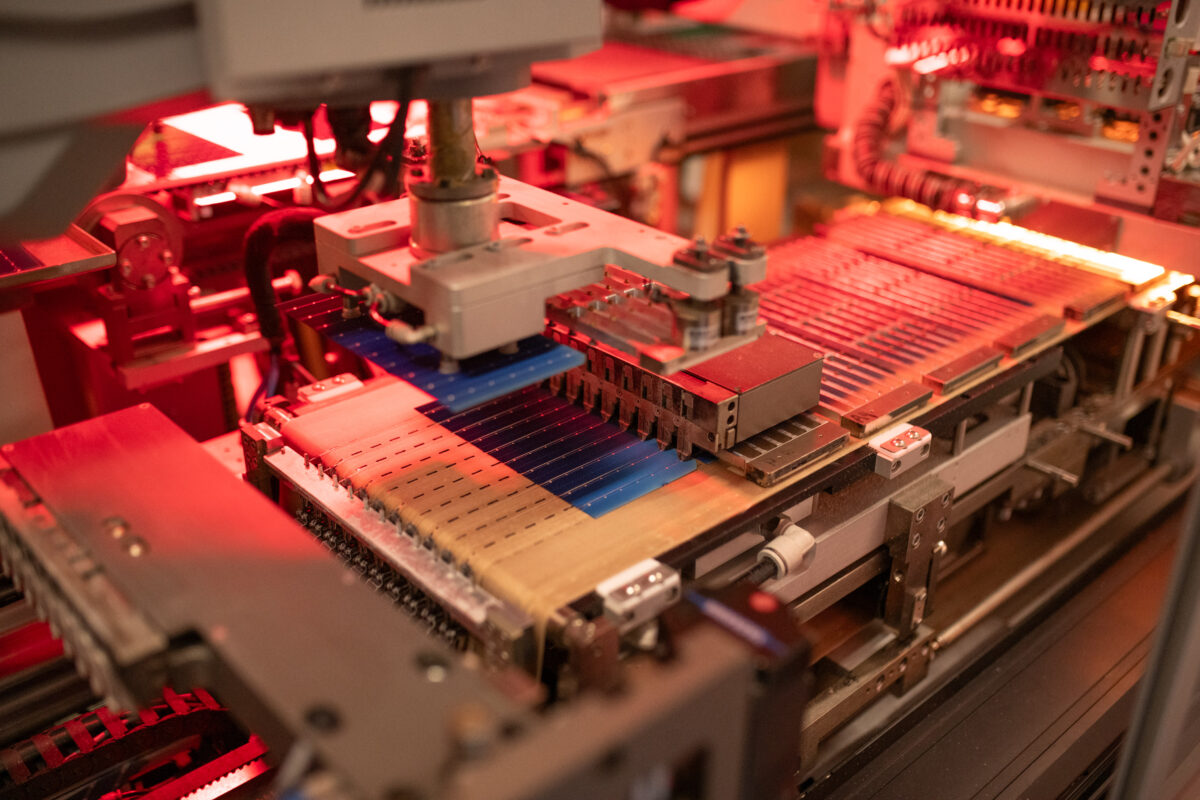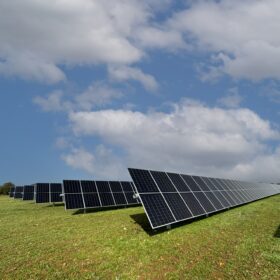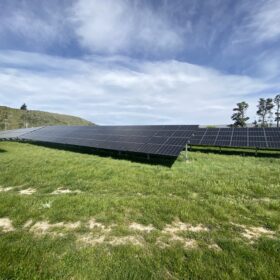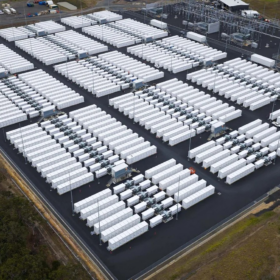As $34.5 million (USD 22.5 million) Australian Renewable Energy Agency (ARENA) funding begins to unlock future possibilities for Australian solar panel manufacturer, Tindo, pv magazine spoke with Chief Executive Officer Richard Petterson about the company’s future expansion on the back of the Solar Sunshot funding, and how it plans to tackle current market and manufacturing challenges to stay on course for future growth.
What does 2026 look like for Tindo?
We were successful in our application to the ARENA Sunshot Solar program, and we’ve been granted almost $35 million funding from the federal government over the next seven years.

Image: pv magazine Australia
What that means for us now is actually expanding our current operations at Mawson Lake in South Australia (SA), and we’ve already tripled our production for last year, which means there’s more solar panels for sale, and that’s enabled us to improve our costs for the product.
Part of the ARENA award is manufacturing production credits, so there’s assistance from the government to actually help us invest money needed to scale up and get volume in the market as well as bring the cost of the product down.
The amount of interest that’s coming in, because we’re available through a number of different channels now and at a better price point, means we’re holding on to our value proposition, which is being the best solar panel that happens to be made in Australia for Australian conditions.
So, our customers now get the same outcome, the same high performing, top quality solar panels, at a better price and we continue to build on that.
How’s the first year under the ARENA funding program been?
This first year has been interesting. It’s been a little bit challenging for solar panel manufacturers because the government has put the battery rebate scheme in place but I think that’s starting to turn now.
Like anything, early adopters moved quickly because they’re people who are already informed and they’re not thinking, should I or shouldn’t I, and they’ve probably been thinking the payback period was too long, but now it’s a no-brainer, so all those people moved very quickly initially, but we’re seeing that settle back into the rest of the market.
The reality is as well, a lot of companies have been selling a focus just on batteries, and not really with enough care, so selling a customer a 20 kWh or a 40 kWh battery–some really big batteries are going in– but it doesn’t match their solar system, so customers can’t fill it up. There’s a bit of that going on.
What’s the knock on for solar installations?
Interestingly, if you only look at the residential market, the amount of solar we’re putting in hasn’t really grown much over the last few years, it’s been pretty flat.
There are replacement systems coming up and I think as that happens people will take the opportunity to increase the volume because you can now get a lot more solar on your roof and power output in the same footprint.
I think the battery scheme will stimulate that even more because all of a sudden a consumers will say, okay, I’ve got a 4.5 kW system, I want to have a massive battery, where they’ll need to have 10 to 15 kW on the roof for that to make any sense, and what we’ve seen in Tindo’s business, it is stimulating sales in that regard.

Image: Tindo
What’s the status for scaling up of your production?
We are scaling production at the same time the panel market’s softened but despite that we’ve managed to increase our presence in the market because people really understand value.
Typically, what we’ve seen is that the part of the market that we target isn’t swayed so much by the economic ups and downs, they’re pretty stable investors or people that want to buy solar to improve their home, or strategically reduce their cost of living, things like that.
How much currency does ‘Australia Made’ have?
It’s a good question and it’s being asked for more and more recently, and we think it’s really valuable for some people and it’s a small portion of the market, maybe 5% or 10% of the market, that would say they definitely want Australian-made products.
Most of the market is very much driven by price, so the way we position ourselves is that we make panels in the market that’s been validated by Choice Magazine recently, we make it for Australian conditions and it’s high performing, and, it will give you the best rate of return.
Tindo products offer the lowest overall cost of power over the life of a system because while it’s slightly more expensive upfront you get much better performance, and, we happen to be made in Australia.
What are some of the challenges of expanding operations?
I think in any company when you’re trying to take the next step, you identify a few things that weren’t a problem before and I’m not talking anything major for us but there’s been two things that are really exciting because when we got the grant, we also released two brand new products in the market in one quarter, and we’ve never done that before.
They’re quite different products too: one’s a 440 W white back sheet panel, and the other one’s a 475 W, all-black panel.
That’s a big technical challenge from a design point of view, but also from a production point of view, because every time you make a new solar panel it takes some time to bed it in and get the production outcome right.
The production team has actually done all that and increased our production rate too, so we’re on track with what we need to make this year, but when you really start pushing the production team, it’s interesting to see them identify and solve unforeseen problems.
The way it’s worked out so far is quite good because its’ enabled us to shake out the process and there’s a couple of key areas identified that we had to do a bit of investment in and rethink that process, but none of its insurmountable.
What benefits beyond the financial, come with being government backed?
Being government backed is really important and that helps in the market too, it builds investment trust, on top of the fact we’ve already got a good reputation that we’ve had for a long time, it adds another layer of trust.
In terms of the risk you’ve got to take to expand production it’s absolutely helpful to have the production credits and ARENA’s grant behind it.
What’s the process now with the ARENA Phase 2 feasibility study, to scale to the next level?
We have to do that in the next 12 to 18 months toward getting to a financial investment decision, and we’re working on that, but right now our focus is on making sure expansion goes well, and so it comes to how that will run and it will depend on location, and it’s still open to where we’ll locate ourselves and what we need to do from a technology point of view.
The interesting thing is the industry moves so quickly that what was relevant a year ago is no longer relevant now, so, it’s really going to be an important moment for us to be able to pick the right technology.
The other part is, once we make a decision, the speed to market will be essential, so if we do a development that actually requires two years planning just to get the building done or the applications through, that’s a bigger issue than the technology.
I think it’s one of the challenges that we face, as there is quite limited commercial space in Australia, we’re not brimming with land and buildings, so that could be the issue.
Is there anything else you’d like to add?
The funding’s been great, but we’ve also completely refreshed our strategy to the market, so we’ve taken on a distribution network over the last 12 months and that’s starting to gain a lot of traction.
We’ve made ourselves a lot more accessible, so, buying Tindo solar panels should be easier to find and at the right price level and we look forward to that growth continuing.
This content is protected by copyright and may not be reused. If you want to cooperate with us and would like to reuse some of our content, please contact: editors@pv-magazine.com.









By submitting this form you agree to pv magazine using your data for the purposes of publishing your comment.
Your personal data will only be disclosed or otherwise transmitted to third parties for the purposes of spam filtering or if this is necessary for technical maintenance of the website. Any other transfer to third parties will not take place unless this is justified on the basis of applicable data protection regulations or if pv magazine is legally obliged to do so.
You may revoke this consent at any time with effect for the future, in which case your personal data will be deleted immediately. Otherwise, your data will be deleted if pv magazine has processed your request or the purpose of data storage is fulfilled.
Further information on data privacy can be found in our Data Protection Policy.